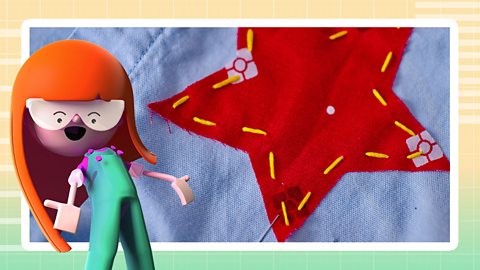Joining fabrics together
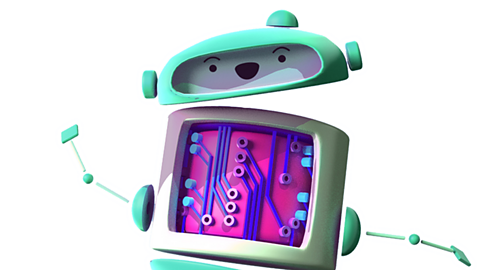
When making products like clothes that are worn and washed many times, it is important to create strong joins.
This is so that the different pieces of fabric can stay together for a long time.
There are many different StitchOne action of the thread moving through the fabric with the needle. There are lots of different types of stitches that look different and have different purposes. that can be used when sewing, such as the running stitch and the overstitch.
There are two other stitches that can make even stronger joins. These are called the backstitch and the blanket stitch.

Types of stitches
You can see examples of the four different stitches below. Can you spot any of these stitches on your clothes?
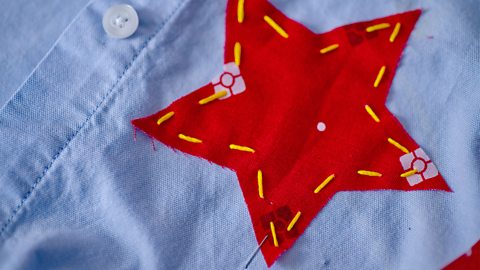
Image caption, Running stitch
A running stitch is made by sewing a line of stitches that go in and out of the material. There is a small gap between each of the stitches.
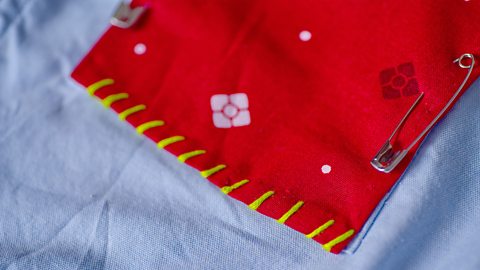
Image caption, Overstitch
An overstitch is a stitch where the needle and thread go over the edges of the material, from front to back, in order to keep them closed.
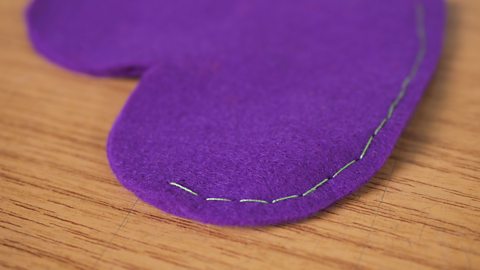
Image caption, Backstitch
A backstitch is similar to a running stitch, but the backstitch closes the gaps in between each stitch, making it stronger.
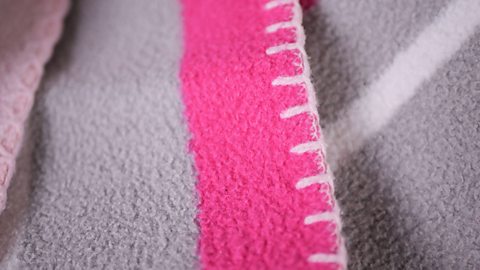
Image caption, Blanket stitch
A blanket stitch is similar to an overstitch. The blanket stitch is stronger because the needle and thread are taken through the overstitch to close the gaps at the edge of the material.
1 of 4
Video: How to make a strong fabric join
Join Mia, Caiden and Emma in the studio to learn how to make decorations with strong fabric joins.
Mia: Hello, I'm Mia. I'm in my studio with Caiden and Emma and we're going to use different types of stitches to create some decorations, like these ones.
But before we get started, let's see what different kinds of stitches we can find.
Emma: We can see lots of different types of stitches on our clothing.
Mia: Yes, and they all do different jobs and have different names: running stitch, blanket stitch, backstitch, overstitch.
Can you see here the stitches are small, with very few gaps?
Children: Yes.
Mia: This creates strong joins that won't come apart easily.
Caiden: How can we give our decorations strong joins too?
Mia: We can use a strong stitch, like this. This is a running stitch. Do you know which stitch is stronger than a running stitch?
Emma: Is it the backstitch?
Mia: That's right! The backstitch is stronger than the running stitch because the gaps are closed. You normally sew this stitch on the wrong side, which is the side we aren't supposed to see.
Start with a running stitch, but then take the needle and thread back on itself.
Do you know what you call a line of stitching, like this, where two pieces of fabric are sewn together?
Caiden: Yes! A seam.
Mia: That's right! The knot stops the seam from coming apart. And when I turn my heart inside out, to the right side, you can see the seam is hidden!
Emma: You can't even see it!
Mia: So, do you want to have a try?
Children: Yes!
Mia: Start by threading your needle. It helps to wet the thread before putting it through the eye of the needle.
Pull the thread through, leaving a nice long tail, then put a knot at the end. You could also use a needle threader, if you have one.
Emma: Point it downwards, pushing it through the fabric, being careful of fingers because needles are sharp! In and out. In and out.
Mia: Nice work! The smaller and more equally spaced the stitches are, the stronger the seam will be. Don't pull too tightly or the fabric will bunch up, keep it flat. Keep the stitches an equal distance away from the edge of the fabric.
The gap between the edge of your fabric and your seam line is called your seam allowance.
Emma: It's quite tricky to keep the line straight.
Mia: Yes, to help with that, you can mark it first as a guide. Use fabric chalk that can easily rub off afterwards.
We were hiding those stitches, but sometimes we want to see the stitch. This is a decorative stitch called an overstitch. This is how we sew an overstitch.
Another decorative stitch is a blanket stitch. A blanket stitch is a stronger version of the overstitch, because the gaps are closed. To sew it, you start with an overstitch then loop the thread through before pulling it tight.
Caiden: It makes a nice colourful outline.
Mia: Yes, it does! I think these decorations are going to turn out great, with strong and long-lasting joins!
Emma: Perfect!
Why do we need stronger fabric joins?
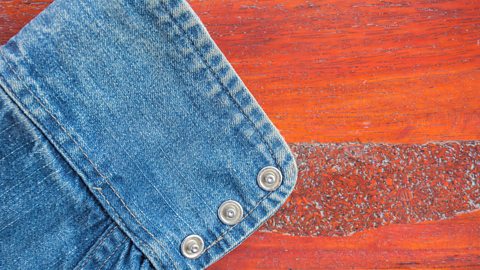
Stronger stitches are often needed to join thicker fabrics, like denim or leather. A more basic stitch, like the running stitch, would not be strong enough.
Strong joins are also needed for parts of the product like the sleeve or cuff of a shirt. These parts will move a lot when the person wears it.
A strong stitch, like the backstitch, is needed to join these parts together to make sure that the material stays in place and does not come apart easily.
Another strong stitch is the blanket stitch. This is used to strengthen the edges of two pieces of thicker fabric, such as a blanket, to stop it from FrayingWhen the threads in a piece of fabric start to unravel or become loose.

Backstitch
A backstitch starts off in the same way as a running stitch.
Instead of moving along the fabric and leaving a gap between the stitches, you take the needle and thread back on itself, closing any gaps in the SeamOne long line of stitches that joins two pieces of fabric together.
This makes the backstitch stronger than the running stitch. This is because the seam is closed and there are double the number of stitches in a backstitch than there are in a running stitch.
This stitch is useful for creating one long line of stitches.
Once perfected, the backstitch can go in straight, curved or zig-zag lines, so it can be used in lots of textile products.
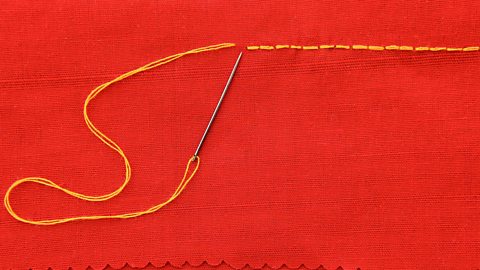
Blanket stitch
A blanket stitch starts off in the same way as an overstitch. Like the overstitch, it is also used to close the edges of two pieces of fabric.
It is stronger than an overstitch because the thread is looped through the overstitch before being pulled tightly. This means the gap between the two pieces of fabric is completely covered.
Blanket stitches are useful for strengthening the joins between the edges of two pieces of material, ensuring that they are less likely to come apart.
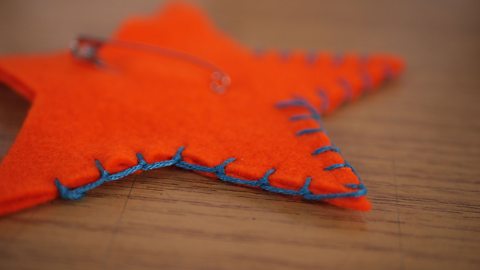
Key words
| Stitch | The action of the thread moving through the fabric with the needle. There are lots of different types of stitches that look different and have different purposes. |
| Fraying | When the threads in a piece of fabric start to unravel or become loose. |
| Seam | One long line of stitches that joins two pieces of fabric together. |
Quiz: Which stitch?
Do you know the difference between a blanket stitch and a backstitch? Have a go at this quiz to find out.
SATs preparation resources. activitySATs preparation resources
Get ready for the SATs papers with videos, activities, quizzes and games to refresh your knowledge and practise your skills.

More on Textiles
Find out more by working through a topic
- count3 of 4
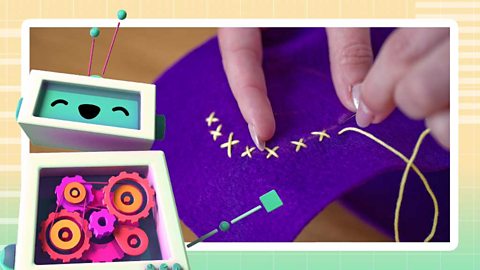
- count4 of 4
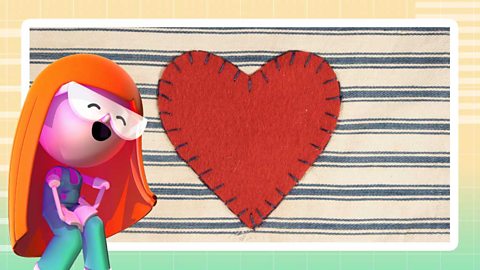
- count1 of 4
